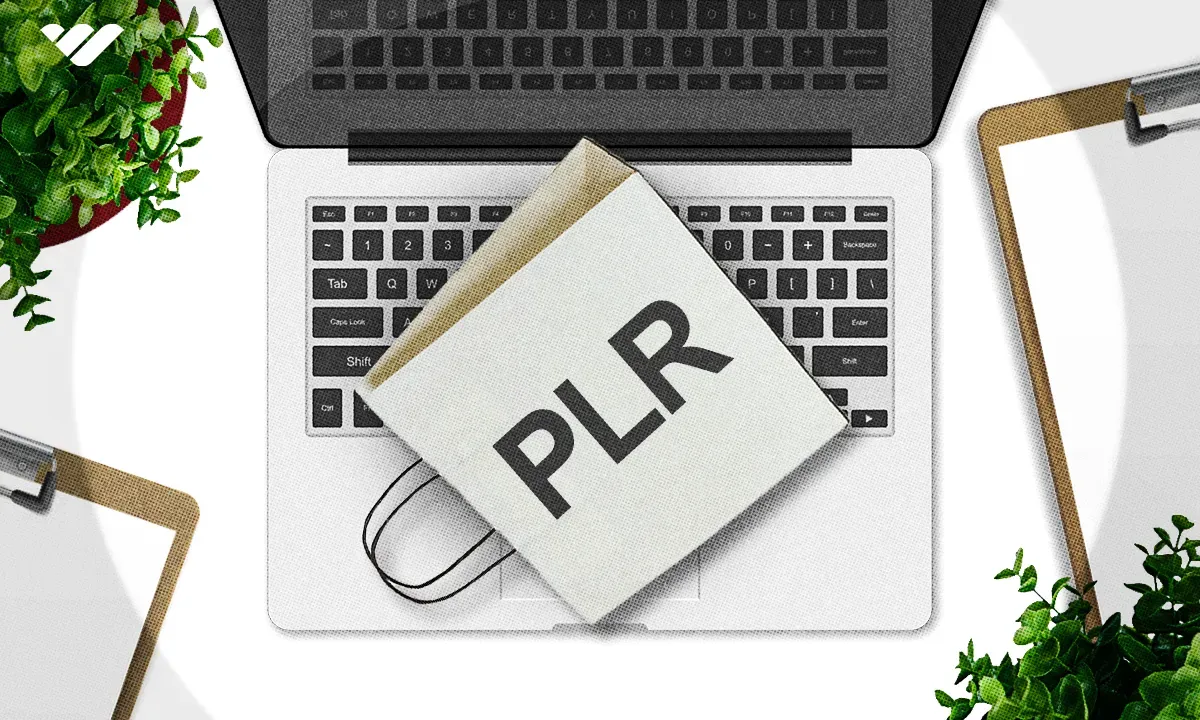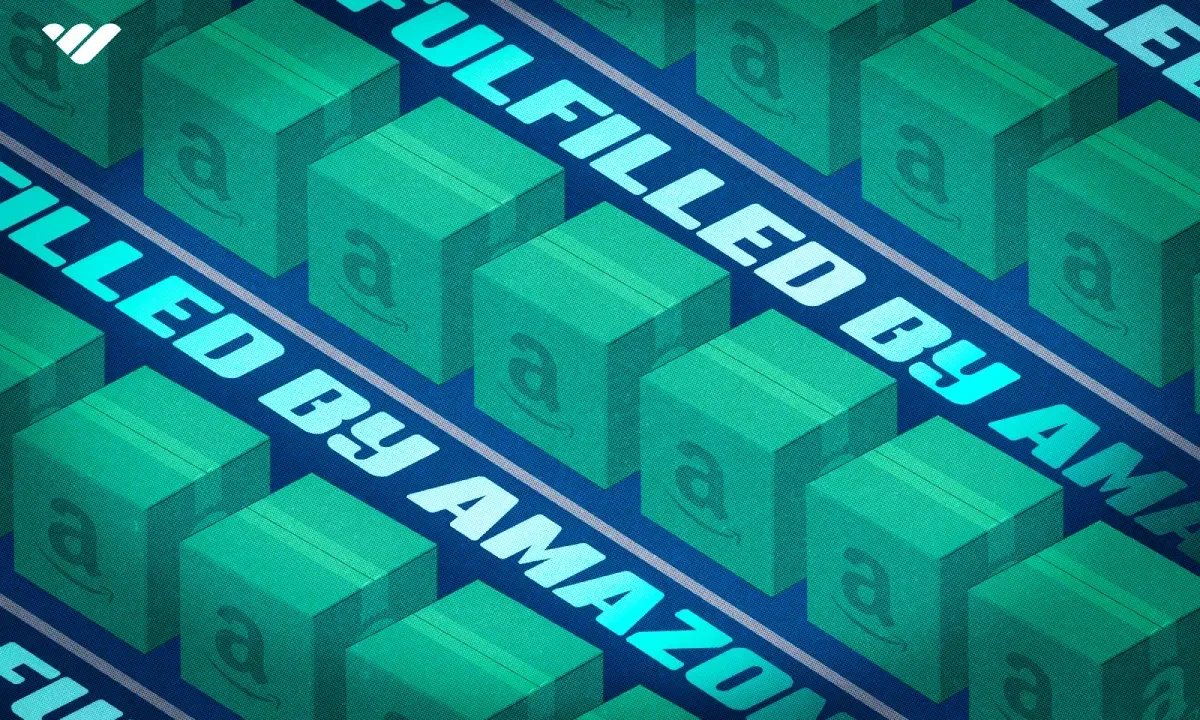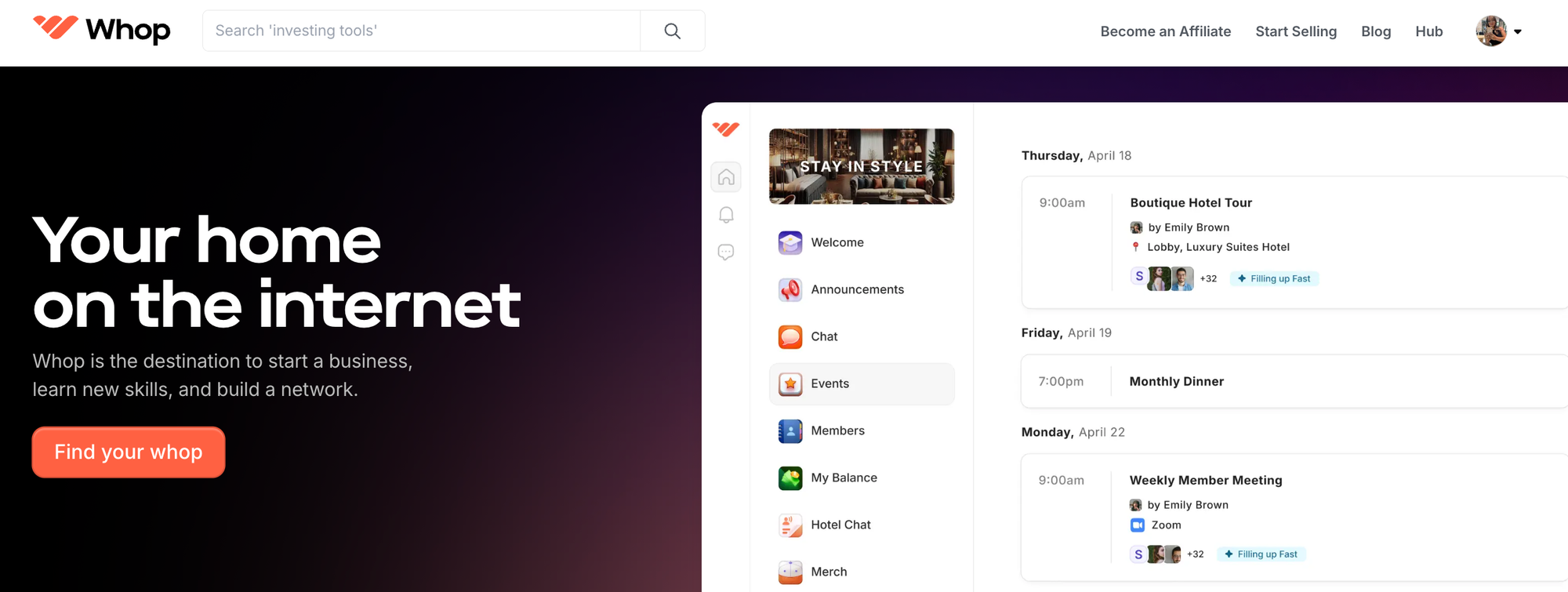The ultimate dream is to have a business that runs itself, making money while you figure out how you're going to spend it! Read this guide for 18 ideas of businesses to earn you passive income.
Key takeaways
- Self-running businesses require significant initial investment of time and money before becoming passive income sources.
- A solid foundation with competitive advantage and customer base directly correlates to how hands-off businesses become.
- Even automated businesses need ongoing maintenance, performance reviews, and emergency response capabilities from owners.
- Affiliate marketing can start for $150-$1500 and generates commissions through automated referral systems.
- Dropshipping requires finding reliable suppliers and automating systems before achieving passive income potential.
Making money in your sleep is a dream that many have, but few achieve. While this may sound like a total pipedream, this goal is achievable if you learn exactly which businesses allow you to step away from an active role, in a way running themselves.
In this guide, you’ll learn the basics of how these businesses work along with exact examples that you can potentially take on to live the dream of yielding passive income from a hands-off business.
What are Businesses That Run Themselves?
Businesses that run themselves are those that operate with a model that requires relatively low maintenance thanks to a simple business model or the ability to easily outsource and delegate necessary tasks.
While you can get to the point of the business generating mostly passive income, this is only possible after an initial setup period which will involve investment, thorough planning and operational frameworks to give a solid foundation.You’ll still need to be present for any necessary ongoing maintenance in addition to being on-call to act swiftly in the case of an emergency.
Think of this type of business like a grandfather clock: once it’s properly constructed, it will do its job of ticking and telling time, and as the owner, and you don’t have to constantly check it to see if it’s working. However, you’ll need to keep up with scheduled maintenance and call for repairs if necessary.
What You Need to Know About Businesses That Run Themselves

Before you assume the role of the owner of this type of business, you need to understand the following key factors to get yourself to a coveted hands-off, passive income position:
You need a solid foundation
The most important characteristic of a business that goes on to basically run itself is a rock-solid foundation. Without this, sustaining or even starting such a business is impossible. Part of this foundation is dependent on the inherent nature or provided structure of the business you choose to take on, but most of this will be your job.
Start by figuring out what your competitive advantage is that will allow you to be the right person to make this business and how you can most effectively position yourself to get customers at scale and become profitable.
A high-level base of knowledge about your chosen business model is also of utmost importance so you can understand exactly how the business works so you can know how to use or implement effective procedures that keep your business running smoothly. You’ll also need to build and foster a strong customer base which is most likely built on the foundation of a strong online presence and marketing strategy.
Remember that the strength of your foundation has a direct correlation with how hands-off your business can be later on, so take your time on this part, especially before scaling or stepping away from an operational role.
There will be some initial investment
These kinds of businesses don’t simply fall out of the air and onto the lap of any aspiring entrepreneur who dreams of having one. You’ll need an initial investment of both time and money which can sometimes be significant depending on which business model you choose.
Effective setup of your foundation for long-term success will require as much effective financial investment as possible in multiple realms. This starts with the up-front capital of purchasing a business that already has the structure to run itself, which is typically more expensive compared to leaner business models.
In terms of time, you’ll need to allot a portion of at least a few months up to a year or more to work actively on the business before you can step back and let the business run itself autonomously. This initial investment is the price you’ll pay for future financial and operational freedom, so be sure to take this period seriously.
Ongoing review and maintenance is key
No matter how hands-off your business becomes, even the most well-oiled machine requires regular maintenance–there’s no such thing as a true “set it and forget it” model. Even if day-to-day operations won’t require constant attention, you’ll need to schedule regular reviews of performance, checking relevant key performance indicators to make sure everything is operating as it should in all areas from revenue to marketing efforts.
You’ll also need to stay informed about the state of the overall market you’re operating in, having a regular news source for industry trends and local competition so you know if it’s time to make changes or adapt to stay ahead.
Plus, it’s important to be on call to jump in when necessary, which means not only agreeing to be able to do this but also having the know-how. Do as much hands-on work as you can in the early stages of your business so you know how everything works, and even if you won’t be the person directly fixing the issue, you need to know the right person to hire and understand if they’re giving you a good deal and realistic timeframe based on industry standards.
Remember that your willingness and ability to strategically step in when needed is what will put you in the realm of someone who can generate a successful passive income source compared to something that is generating on autopilot.
18 Businesses that Run Themselves, So You Can Earn Money While You Sleep
Here are some exact businesses that, when set up correctly, will allow you to cash in around the clock, even if you’re sleeping or on vacation.
We’ll also go over the initial startup costs for each so you know which business model is right for you based on your budget.
1. Affiliate marketing

A business model that has potential for scale with relatively low initial investment and the ability to automate is affiliate marketing.
With this model, you will be promoting other company’s products through your own efforts and earning a commission that is tracked through a unique referral link. It can be highly passive once you’ve created a winning system for your marketing that targets a specific and profitable audience.
Average cost of starting an affiliate marketing business:
$150-$1500, including marketing efforts, online presence, content creation tools and potentially paid advertising.
How to start an affiliate marketing business and earn passive income:
- Pick a niche
Start in a niche that you have knowledge or passion about so you can differentiate from competition. - Find affiliate programs
Browse affiliate marketplaces such as Clickbank to find affiliate programs that are in your target niche. - Set up your online presence and marketing plan
Most of these programs require that you have an online presence to start selling their products, so make sure it’s set up and have a marketing plan that drives traffic towards it. - Produce high quality content
You’ll need content that educates potential customers and entices them to purchase. This can be used for both organic or paid advertising. - Create a marketing system
Through trial and error, you’ll create and perfect a marketing system that will have the potential to run on autopilot so you can collect passive income through affiliate marketing.
2. Dropshipping
Dropshipping is a business that is well known to have the potential to benefit its owners with income that comes with very little active effort. However, this stage is only reached after you find a winning product and learn how to market it while automating as much of the process as you can.
The great thing about dropshipping is the variety of products, so it’s easy to find a product that you align with in terms of either personal interest or some form of expertise.
Average cost of starting a dropshipping business:
$200-$1500, including website setup, initial marketing, content creation tools, automation software
How to start a dropshipping business that runs itself:
- Narrow down to a niche
While you can test several different products and niches in the early stages of your dropshipping business, you should eventually move to just one so you can become an expert and authority in it. - Research the market
Once you’ve picked your niche, you need to research the market, particularly the current demand and competition. - Find reliable suppliers
Learning how to find a dropshipping supplier is its own skill, and your ability to vet and pick a good one will set you apart from competition who go at this part with no strategy. - Set up your online storefront
Pick a platform to set up an online storefront so you can sell your product. Shopify is one of the most popular for dropshippers. - Promote your product
Getting eyeballs to your store and its associated social media pages is essential if you want to stand out against competition in dropshipping. - Delegate and automate
Dropshipping will only come close to generating fully passive income if you create automated systems and delegate busy work to staff over time. However, don’t try to delegate too early on: you’ll be most successful doing so after you learn how everything works firsthand.
3. Billboards
If you want to own a piece of the skyline and benefit from a business model that is one of the lowest maintenance from the beginning, billboards can be a great choice.
As with all real estate, location is key, but you have to understand how much the cost can vary depending on how busy the area is.
Once you set your budget and choose a prime location, you’ll need to lock in advertisers, and from there, you can earn consistent income from those that want to display their business on your billboards.
Average cost of starting a billboard business:
$10,000-$200,000+, depending on location and if the billboard has any technological components, and if you’re erecting it yourself or buying an existing one.
How to start a profitable billboard business:
- Find a prime location
When it comes to billboards, location is everything. While you might pay top dollar for a prime location, the rate you’ll be able to charge in addition to the demand will make up for initial costs. - Obtain any necessary permits
Starting a billboard business often requires permits, so make sure to research those in your local area in addition to zoning requirements. - Set up your billboard
Hire pros to set up your billboard and make sure everything is installed properly, particularly if there are dynamic or electric components. - Market your ad space
Your first billboard ad will likely be an ad for the space there. Be ready to respond to any inquiries with reasonable but profitable rates and terms. - Implement a system for regular maintenance
Once you’ve set up a system for regular maintenance which will cover quick ad changes when necessary and any ongoing utility costs, you’ll be able to step back and collect money without working actively on your billboard business.
4. Print-on-demand

For creatives that are looking to get passive income from their eye for design or clever word choice, print-on-demand (POD) is like having an art gallery that’s open 24/7 and stocked with products that you don’t need to ever physically handle.
You only have to go through the design process once, and after that it’s just a matter of using the right infrastructure, inventory management and marketing that will make it run itself.
Another great thing about the POD model is the low startup cost since you’re operating as a dropshipper so you don’t need to buy initial inventory or fuflill it yourself.
Average cost of starting a Print-on-demand business:
$100-$1000, which can include ecommerce platform fees, initial marketing, and potential design costs.
How to start a print-on-demand business that runs itself:
- Choose your type of product
Print-on-demand allows the liberty of choosing several products such as tees, hoodies or other merchandise in addition to household items like mugs and towels. - Find a platform to sell it on
Your platform needs to support basic ecommerce functionality and have a clean design - Create designs
Creating your designs can be done with software like InDesign, Canva, or even AI. You can also hire a freelancer. - Select a print-on-demand service
Companies such as Printful and Printify offer print-on-demand , so compare and choose one that is best for you. - Drive traffic and sales with repeatable systems
You can achieve hands-off status fairly quickly with POD if you make systems that give repeatable results as they are scalable and easy to delegate to a team.
5. Blog/Vlog
You can consider websites that get consistent traffic as digital real estate. When they reach a certain level of traction, you’ll have a variety of passive income streams opened up to you, as you can earn income through affiliate marketing, ads, and more.
Blogging or vlogging boils down to making content with either words or video and putting it out consistently so you gain an audience.
Remember that this business is one that starts slowly, so the focus is being patient with the whole process, maintaining a long-term vision and focusing on fostering strong rapport with a loyal audience.
Average cost of starting a blog or vlog business:
$250-$1000, including website hosting, initial content and recording equipment if vlogging.
How to earn money with a blog:
- Pick your expertise
Your topic is essential and needs to authentically align with your current interests and passion. The goal is to position yourself as an authority figure over time, and this is best done with an authentic voice that your audience resonates with. - Set up your content channels
Today, you can become a content creator on basically any platform and end up doing well. TikTok, Instagram, and YouTube are all full of opportunities. If you’re writing blogs, choose if you’re publishing on a site like Medium or if you will be setting up your own blog in which case you can use software like Wordpress to help easily launch. - Consistently put out relevant content
Consistency is key if you want to become a successful content creator. This will take a lot of upfront work as someone who is building this type of business from scratch, but this foundation is what will allow you to scale and automate. - Implement growth strategies
Consider using advertising or strategic partnerships in addition to focusing on trends that are both current and evergreen for organic marketing to grow your audience. - Monetize
Once you have decent traction and an established voice and audience, you can monetize with sponsored posts, advertisements, or digital products. - Delegate and automate
While a blog or vlog takes a lot of work up front, eventually you can get to the point where you hire content creators to work underneath you so your job becomes less involved and you can collect ongoing passive income from things such as ad revenue or sponsorships.
6. Vending machines
Imagine having a store that has the potential to be open 24/7 with no employee overhead, only requiring you to show up if there is need to restock inventory–this is the automated dream that vending machines provide.
Location in addition to getting permission to place your vending machine are some important considerations, as is your choice of product and machine type.
It’s not uncommon for vending machine owners to end up with multiple units once they’ve figured out how to effectively run a single one.
Average cost of starting a vending machine business:
$2,000-$10,000+, including the cost of a machine or machines in addition to a license or any other necessary permits and potential space rental.
How to start a vending machine business and earn while you sleep:
- Find a good location
Location is key when it comes to picking a vending machine. Areas with high foot traffic such as schools or buildings in cities are good picks. You’ll likely need to negotiate terms with property owners in addition to predicting sales based on current competition. - Choose your machine
Find a high quality and reliable vending machine that has the capability to stock the product you intend to offer. - Find a supplier
You’ll need to get a reliable supplier that you can foster a good relationship with to get your desired stock as you need it. - Maintain and restock
Set up a regular maintenance and restocking schedule to make sure that your machines are always working as they should and ready to sell products as needed. You can outsource much or all of this to staff once you’re profitable enough so your vending machine runs itself.
7. ATM business
Like vending machines, ATMs have set-it-and-forget-it potential early on, and you can reach this state potentially earlier and with lower maintenance with ATMs.
However, if you want to get started in this business, you’ll need to work with a lot of cash–literally–which means making sure that security measures are tight.
Location is also incredibly important as you need to be in a high-traffic place where people need cash right away.
Average cost of starting a business:
$15,000-$50,000+, including the machine, cash, permits and licensing.
How to start an ATM business:
- Proper business and licensing setup
Due to their nature, ATM businesses are surrounded with legalities including licenses and business structures that you’ll need to properly navigate, ideally with the help of a professional. - Find a strategic location
Think of popular areas where people will want or need cash that have good foot traffic or somewhere with a regular crowd such as a bar or club. - Implement a schedule and security
ATMs don’t stock themselves with money, and when you’re reloading cash, a significant amount will be handled so make sure there is security and a tight schedule in place. - Monitor closely
Check reports to track your ATM’s performance while also addressing any potential issues promptly as they arise so you don’t have downtime. - Perform routine maintenance
Although ATMs are already largely hands-off by nature, you’ll need to double check with a regular maintenance schedule to make sure everything is functioning correctly as it’s better to perform preventative maintenance than emergency maintenance.
8. Selling PLR digital products

Private label rights (PLR) products are another great way to make money online. These products offer a similar model to dropshipping with the added benefit of dealing entirely with digital product that gives you the ability to step away and watch the business churn out cash once you set up the right systems.
PLR products come in a range of mediums, from text to video, and are a good alternative if you’re struggling to build a digital product from scratch.
You can sell these as-is or add your branding or personal modifications.
Average cost of starting a PLR business:
$250-$1000, which includes purchasing PLR products or a membership to access them, website setup and initial marketing. You can even find some PLR products for free.
How to start a PLR digital products business:
- Start with a niche
Identify a niche that has a current demand that you also have interest in or knowledge about so you can know what customers want and what makes a good product. - Get familiar with PLR marketplaces
Browse different marketplaces that offer PLR products, vetting them by reading reviews or trying their free products before moving to the paid versions. - Make any necessary modifications
Most PLR products won’t be ready to use immediately as they are. Take the time to make any modifications that align the product with your brand and increase its value. - Launch your store
Setting your store up using a platform that conveniently hosts a variety of digital products will allow you to get started quickly, and in the case of Whop, for free. - Market, scale and automate
Drive traffic to your storefront with a comprehensive digital marketing strategy. Once you gain traction, start to automate repeatable processes like customer service or content strategy so you can minimize your involvement.
9. Parking lots
If you’re entrepreneurially minded, whenever you’ve gone to a popular event and paid for parking at an independent lot, you probably ran the numbers and realized these parking lot owners are pulling in absolute bank with little apparent overhead.
As much of a cash cow parking lots can be, you’ll have to find a gap in the market and available land before you can get started in this business.
However, once you set one up properly, it has the potential to print money in the background with minimal maintenance or active involvement.
Average cost of starting a parking lot business:
$50,000-$500,000+, depending on the cost of the land, if you’re building the lot yourself, implementation of a payment and security system in addition to staff
How to start a parking lot business and earn passively:
- Research the local market
Make sure to understand the demand for parking in a specific area, forecasting to account for seasonality and events. - Acquire space in a strategic location
If you find an area that overlaps with an opportunity gap, make sure to get sufficient land with the correct zoning that allows you to fully develop a parking lot. - Comply with regulations
In addition to zoning requirements, make sure you are complying with all local laws, permits or any other prerequisites that you’ll need to operate a parking lot business. - Set up the business infrastructure
Once your lot is built out, you’ll need to finalize the security, payment systems and processes so that you can operate with minimal oversight. - Staff and maintain
Hire reliable staff and perform necessary maintenance, marketing as necessary. If you set everything up well and picked a good location, you’ll basically already be at the point of the parking lot paying you as you sleep.
10. Stock photography
If you’re good with the camera and want a stream of income that pays you outside of finding clients and landing shoots, stock photography could be the answer.
While it will take consistency and patience to get to a decent level of recurring income, it’s a good way to showcase your skills and make use of all the photos you have in your library to get paid passively.
Average cost of starting a stock photography business:
$600-$5000. The primary overhead is your camera equipment, and if you don’t have a personal website yet, it’s a good idea to use your stock photography as potential exposure for new clients.
How to start a stock photography business:
- Get the right equipment
The most basic requirement for this type of business is a decent camera. If you’re already a photographer, you might just want to invest in more diverse equipment so you can take more types of photos. - Brush up on your photography skills
Refine your photography and editing skills to be on par with photos that you see on websites that offer stock images. - Take relevant photos in different niches
Diversity and volume is key to making money in stock photography, so take photos of everything from cityscapes to nature and portraits. - Submit to stock photography websites
Upload your best work to stock photo sites such as Shutterstock, creating an account and following their guidelines during the process. - Review metrics and iterate
Check out metrics on your image such as views, engagement and sales in addition to reviewing that of the competition and continue to iterate while you collect royalties in the background from all the performing images you submitted before.
11. Rental properties

Real estate is known to be one of the most common routes to becoming a millionaire, and it’s also attractive for its potential for generating passive income with rental properties when everything is set up properly.
Getting to a level of passive income will require careful planning and teamwork as rental properties have the opposite potential of becoming a time intensive, 24/7 job if you don’t lay the correct foundation.
Average cost of starting a rental property business:
$25,000-$500,000+ for initial investments like down payment, renovations, and a team. Consider partnering with other investors to lower everyone’s up front risk and divide duties.
How to start a rental property side hustle:
- Market research
Understanding the real estate market is the most important prerequisite if you want to get in the rental property game. Stay up to date with news and build a network of individuals such as real estate agents and brokers that are tapped into the latest in what is happening. - Identify and acquire property
Based on your thorough understanding of and unique perspective on the real estate market, keep an eye out for a property that meets your qualifications and act quickly on the opportunity when it comes as you won’t be the only interested party. - Prep for rental
Get your property ready to rent for top dollar, whether it’s for longer term tenants or for short term rental such as Airbnb. - Create systems that work and scale
Property management and maintenance are the two things that you will need to create a team and systems for to allow you to fully step back from direct involvement so you can sit back and collect rental checks.
12. Ebooks
If you enjoy writing and sharing your work with others or if you have expertise in an in-demand skill, an ebook can be a great way to gain steady and potentially passive income.
The best part about the ebook business model is its low initial startup cost and the broad marketability with potential for scale and even upselling to more expensive products.
Average cost of starting an ebook business:
The costs associated with starting an ebook business are relatively low, ranging from below $50 to a few hundred dollars to start. This will include expenses such as the software you use to write and design the ebook–Canva premium or even its free version is normally sufficient.
How to start an ebook business:
- Identify a profitable niche
Before you go about jumping on a niche and idea just because you know about it, look for existing ebooks or courses out there and determine how established the demand is. Amazon’s Kindle marketplace rankings can give you a good idea of which niches are currently trending and popular. - Write your ebook
Outline your ebook first then take the time to get it to completion. You can use AI or even pre-written private label rights content to help speed up the process. - Design a compelling cover
The cover matters more than you might think when it comes to selling an ebook, so consider investing in a freelance designer to help make a cover that will help to drive sales. - Choose a platform to sell on
Once your ebook is complete and exported as a usable file, upload it to a platform where you think it can perform best. Kindle Direct Publishing is a popular choice but will have more of an established audience but higher fees and competition, so you can host it securely on your own site. - Market your ebook
Getting the word out for your ebook is what will allow you to reach the traction of having ongoing passive income. Utilize unique viral methods like booktok to save money on adspend.
13. Online courses

Another way of effectively monetizing your knowledge in a format that can be sold at higher prices than ebooks with a similar business model is the business of online courses.
More consumers are looking for independent instructors on relevant topics, so if you have the qualifications and reputation, carve the time out of your schedule to organize, record and launch an online course. The price tag for online courses is much higher than that of ebooks, with some niches commanding prices of thousands of dollars, so it’s well worth the effort to plan one out.
Average cost of starting an online course business:
Starting an online course typically costs between $500 and $5000, which includes the costs of your course creation tools (i.e. microphone, camera) and initial marketing efforts in addition to any platform fees to host and display your course.
How to start an online course business:
- Pick your topic
Selecting your course topic that you can position yourself as an expert in. Make sure that the niche has proven demand as well. - Outline your course content
Before you go about recording the whole course, create an outline and review it to make sure it’s fully comprehensive, logical, and gets the student their expected result at the end. - Create supplementary course materials
A good course will come complete with quizzes, worksheets and additional resources that complement video content. - Organize and record
Once you have the course outline and all of the supplementary materials, it’s time to block out the time to record the course. Make sure the video and audio are high quality and engaging. - Select your course platform
Your course platform needs to be easy to use for both you and your students and not too expensive. - Market and launch your course
Use a comprehensive marketing strategy to build your initial audience for the course and if you want to be successful right from day one of releasing the course, be sure to create anticipation surrounding it before you actually launch it, offering a promo code to loyal subscribers through email marketing.
14. Laundromats
One of the most classic examples of a business that runs itself with minimal effort is a self-serve laundromat. Take time to do market research on existing competition to forecast revenue and figure out how you can acquire and retain enough customers to become profitable.
Investing in proper equipment and security may be costly, but it will allow you to run the laundromat 24/7 with little to no supervising staff, and your only job will basically be monitoring, servicing, and collecting cash once you have the systems and infrastructure set up.
Average cost of starting a laundromat business:
Starting a laundromat business that is self-service is in the low to mid six-figure range. Your cheapest entry point would be to buy an existing laundromat that is going out of business that already has the infrastructure, equipment, and systems, and if you need to build everything from the ground up you’re looking at startup costs on the higher end.
How to start a laundromat business for passive earnings:
- Conduct market research
It’s incredibly important to correctly position your laundromat business to ensure you’ll have a steady enough customer base to justify the overhead, so do as much research as you can to determine the viability of your chosen location. - Secure a location
After doing market research, have your eyes set on an ideal location and acquire any available property that is most likely to succeed. - Purchase equipment
Make sure you purchase the right laundry equipment that is reliable, sturdy and energy efficient so you can reduce operational costs and maintenance. Consider investing in a comfortable corner to hang out complete with chargers and wifi so you can stand out and become a preferred spot to do laundry. - Set up your business infrastructure with automation in mind
Implement security cameras and easy-to-understand payment systems complete with foolproof instructions and troubleshooting to greatly reduce the need for staff. - Market and maintain your business
Get as many loyal customers as you can by offering loyalty programs and making their whole experience as enjoyable as possible so they refer others with word of mouth. Keep up with cleanliness and maintenance, and once everything is running smoothly and systems are in place, you can start stepping out of the picture.
15. Automated social media marketing agency
Automated social media marketing is a method that savvy individuals use to generate passive income by servicing needs for social media marketing using tools and systems that can deliver the services with little to no maintenance.
Once you scale to the level of having an agency, you can outsource to lightweight staff that can handle any direct communication or concerns while you can use tools like chatbots, post schedulers, and automated engagement that will allow you to step away and collect checks while only needing to step in for emergencies.
Average cost of starting an automated social media marketing business:
Starting your own automated social media marketing business will be in the $1000-$5000 range. Necessary expenses include automation tools, content creation, staff, and advertising budgets.
How to start an automated social media marketing business:
- Choose your expertise
You need to have a unique value proposition as someone offering social media marketing services. This can be a particular platform, ad strategy, or niche to specialize in, such as marketing for real estate agents or Snapchat ads for dropshippers. - Set up automation tools
Use tools that can handle post scheduling, account management or basic customer service with chatbots that will all help to make up your automated marketing machine. - Create automated content
Once you’ve identified your marketing goals and have all branding and advertising assets, create content in bulk and schedule automated campaigns so you don’t have to worry about continuing to create it manually over time. - Launch and monitor campaigns
Even though you won’t need to be actively involved in every step, you’ll still want to monitor performance metrics as you continue to automate and delegate as much as you can.
16. Amazon FBA

Fulfillment by Amazon, also known as Amazon FBA, is a business model that’s known to have hands-off potential once the correct systems are in place. Although there will be an initial set up period which will take both time and money, since Amazon handles all aspects of fulfillment, you’ll be able to step away and watch your business scale without much physical involvement.
There’s even an established market for selling these businesses once the team and processes are in place, so you’ll have the option to sell your business as an asset for another owner to reap the benefits from if you want to cash out at any point.
Average cost of starting an Amazon FBA business :
Launching an Amazon FBA business will typically cost between $2,500 to upwards of $10,000. The largest part of your budget will be your initial inventory, which needs to be ordered in bulk to get the best prices. If you choose to create your own product, the startup costs will be even larger. You’ll also want to budget for potential adspend and product research tools.
How to start an Amazon FBA business:
- Conduct market research
Amazon is one of the most difficult markets to break into, so it will take a good bit of market research that you can enhance with paid analytics tools or private communities to settle on a product that presents a profitable opportunity. - Register your business
You’ll want to formally register your business before setting up your Amazon account so you can already be prepared to engage with suppliers and customers as a business that has the capacity to buy and sell your chosen product at scale. - Set up your Amazon seller account
Register for a professional seller account plan under your business name so you can be eligible to sell with Amazon FBA. - Source your product
You’ll need to find the right supplier for your product before you go about and sell it, so be sure to vet each of them as much as you can in addition to initially ordering samples before placing a full order. - Launch and market your product
Create high-quality listings complete with descriptions and optimized keywords and uitilize Amazon PPC ads in addition to other marketing efforts to push your best sellers rank up in your category. - Optimize and scale
Review metrics and create systems that allow you to scale to a livable income, implementing SOPs and hiring staff so you can eventually remove yourself from an active role in the trenches of your business.
17. Self-Service Car wash
Another physical business that allows the option to operate with little active involvement is a self-service car wash. With the right equipment and infrastructure, it’s possible to simply execute on scheduled maintenance and run it with little to no staff.
Gaining enough traction and customers to reach profitability is key, and you’ll also need to make sure you’re correctly positioned in a market where there is a demand and no significant competition.
Average cost of starting a self-service car wash business:
A self-service car wash business will require an initial investment in the six figure range with factors contributing to the cost including the location, size, and the tech and equipment you incorporate in your business. You’ll also have to account for high ongoing maintenance bills in terms of utilities, so although starting hands-off will be easy from the get go, scaling to profitability is its own challenge that will take time.
How to start a self-service car wash business:
- Pick a prime location
Choose a well-populated area with the right demographics and little competition. Make sure it’s visible so it can be easily discovered. - Get your business set up properly
Obtain all necessary approvals to set up a car washing facility, which might include needing permits, licenses or more depending on your local regulations. - Set up your infrastructure
Make sure you invest in proper car washing equipment that allows for automated car washes and payment systems that require minimal supervision. - Promote and scale
Get the word out as much as possible about your car washing business, advertising locally so you can get a loyal customer base that will eventually have you collecting checks in your sleep as your business scales.
18. Storage units
One of the most profitable uses of commercial real estate per square foot is to create storage units within that space. This business model is incredibly attractive for those that want a company that runs itself as there is basically no ongoing active maintenance other than security once the customers come and drop off their things.
However, if you want to start a successful storage unit business, come with deep pockets and understand that while the numbers for full occupancy will look amazing, it will take time, effort and coordination to get close to that number and in the meantime you’ll be running a business with fairly high overhead.
Average cost of starting a storage unit business:
Starting a storage unit business is perhaps the most expensive upfront out of any of these business models, with an initial cost that typically costs a few hundred thousand to upwards of $1,000,000.
How to start a storage unit business and make money with it:
- Thorough market research
Creating a storage unit business is incredibly costly, so before you even think about investing in the property and infrastructure, forecast market demand and ensure that you’re launching in a market that has the potential to be fertile ground for your success. - Choose a strategic location
Picking the right location will mean having a large budget as you’ll likely have to pay up for an area that checks all the boxes of being visible and sufficiently sized to make a storage unit business with potential. - Design and build your facility
You’ll need to plan out the entire facility to include different unit sizes and types that fit storage needs, including climate-controlled or drive-up units. Research what competition is doing and consider offering a unique value-add. Make sure to implement management and security systems so you can monitor and handle as much as you can remotely. - Market and scale
Invest into marketing efforts to get as close as you can to full unit use, advertising strategically to different target markets such as college students and home buyers. Through these efforts, once you reach a certain level of scale, you’ll have the peace of mind and profitability to step back and watch your storage unit business run itself as you get paid.
What’s the Best Way to Earn Passive Income?
Generating passive income is the dream for many, and as with everything in business and success, there are many paths that lead to the same destination, and some are more efficient than others.
The best path will depend on your budget and your skills. In general, those with lower budget and experience should start with online-based businesses such as dropshipping and digital products ecommerce, while those with more experience and money can engage in physical products ecommerce and real-estate based models like self storage, laundry and car washes.
Using AI to earn passive income
One of the best opportunities today to earn passive income quickly is by implementing and understanding AI. While you won’t be able to have AI do absolutely everything for you, it will make the creation process a lot easier and it can help automate and scale your business to a livable income.
Passive income with digital products
Digital products stand out amongst all other options for creating passive income thanks to their low startup costs, ease of creation, and potential for scale and automation.
Many of the hands-on aspects of traditional businesses, including inventory management and oversight of in-person staff or other physical infrastructure are completely eliminated with a digital products business, which opens up the potential for earning passive income early on once your product is made and launched.
One of the most important factors for creating a viable and scalable digital products business that can make you money around the clock is picking the right platform as this can make or break your entire business model even if you have the right product.
Whop: The Best Way to Make Money Online

If you’re ready to join the group of new age, savvy entrepreneurs that are capitalizing on the golden opportunity of selling digital products on a thriving marketplace that has customers coming in 24/7, Whop is the perfect platform for you.
Not only is creating a store entirely free, you’ll be able to create your very own corner of the internet that can host just about any digital product you can think of, from courses to paid communities, ebooks to SaaS.
Once your store is made and stocked with products, you’ll be able to launch to a thriving marketplace of active and loyal customers who are always looking for the latest and best providers of tools and information to suit their needs.
Your store and its product could be the one they were waiting for, so if you already have an idea, get started and launch here today.
FAQ
How much money do I need to start a business that runs itself?
The amount of money you need to start a business that runs itself will vary based on a number of factors, most notably the type of business you are starting and what your income goals are. On the low end of the budget spectrum are digital products businesses, which can cost as little as $100 to start and anything that involves real estate and physical assets, staff, and security such as a self-storage unit business will be the most costly, potentially requiring a seven figure budget.
When can I expect a business to become truly passive?
A business will only become truly passive after an initial period of active involvement and investment. This period can range from as short as a few months up to a few years, during which you’ll be implementing and establishing systems, automating processes, and delegating tasks. Although it’s possible to collect passive income from these operations, you’ll still need to be ready to step in for any emergencies or maintenance that requires you.
What skills and qualifications do I need to operate a business that runs itself?
In order to operate a business that runs itself, at the minimum you’ll need the startup costs combined with basic business acumen which includes proper market research, determining a product-market fit, and reaching a certain level of profitability. You’ll also likely need to be able to create and maintain systems and automations that keep your business running without your direct involvement or supervision, so technical skills in addition to delegation and management skills will help.
What are the best businesses that run themselves?
The best businesses that run themselves are those that are easily scalable and can run reliably with automations and delegations and without much of a need for active involvement. Digital products businesses such as ebooks, courses or memberships are a top choice due to their low startup cost, minimal overhead, scalability and ability to implement teams and systems that allow them to basically run themselves. Vending machines, ATMs, and self-service laundromats or car washes are good choices for those with more working capital and business experience.
Is it a good idea to start a business that runs itself if I’m a beginner?
If you’re a beginner and want to start a business that runs itself, it’s a good idea to approach this venture as a learning experience, not rushing to get to the point of passive income quickly and understanding that you’ll need to be actively involved throughout all of the beginning stages. Digital products are particularly beginner friendly due to the lower up front risk in terms of time and money invested and still offer great upside and the ability to acquire transferable skills that you can use in larger, more high stakes ventures.



